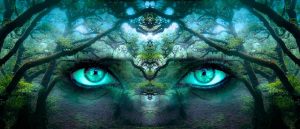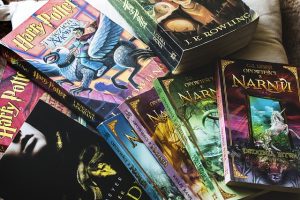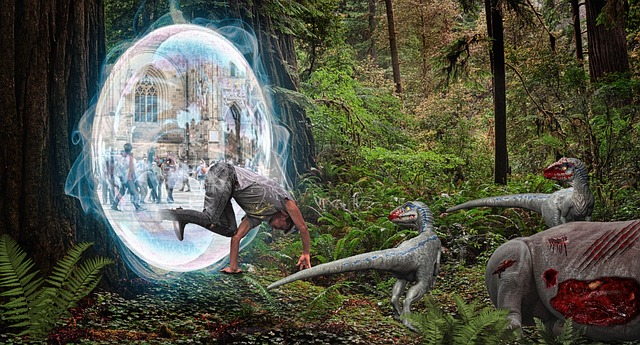Welcome, fellow storytellers, to a realm where breathtaking thrillers come to life, shaped by the hands of ingenious creators like you. This blog post will embark on an extraordinary journey, unraveling the secrets and techniques behind crafting the perfect fictional world for your spine-chilling masterpiece.
So grab your pen and paper and dive into the mesmerizing art of crafting a fantasy universe that will leave readers begging for more.
Research and gather inspiration from the real world
As much as fictional worlds are an escape from reality, they still need to be rooted in some truth to make them believable. That’s why it’s crucial to research and gather inspiration from the real world. It could be anything from a historical event to a scientific theory that sparks your creativity.
What makes your world unique and interesting to readers?
Before penning down your thriller, gathering a pool of ideas is essential. Think about what sets your own world apart from the real one and what makes it intriguing for readers.
Brainstorm! This is the fun part—jot down as many concepts and ideas as possible to get your creative juices flowing. There are so many ways in which fictional worlds differ from reality. Here are just a few examples:
– Physical laws don’t always apply to the characters or objects in a fictional world. Things can happen that wouldn’t be physically possible in the real world—flying cars, magical spells, or burning buildings that can be restored with a snap of your fingers.
In fiction, these events take place without violating any known scientific principles—it’s all part of the magic and mystery of storytelling!
– Other things to consider: What is the weather like? What natural resources are there? Is it a dystopian society with supernatural elements or a small town filled with dark secrets?
Whatever you choose, incorporate unique characteristics that add depth and tension to your story.
Create the backstory of your fantasy world

Every world has a backstory; your fictional one should be no exception. What is your world’s history? How did it come to be, and what events led to its current state?
Did your world come to be by natural means, like a planetary collision, or was it artificially crafted by an intelligent being?
Think about how much history exists before the time period in which you plan to take place—has the culture evolved over many generations, or did it all come together suddenly?
Exploring these questions can help paint a bigger picture of your fictional world’s past. Take time to develop the history of your world and understand the events that shaped it into what it is today. This will add depth to your universe and help drive the plot forward.
Establish rules and limitations
What are the boundaries of your world?
Every fictional world needs rules and limitations to maintain its credibility.
Start by outlining the basics of your world. Consider your world’s governing system—are there different regions with varying ideologies, or does one ruling party control everything? How do different groups interact with one another?
What type of landscape do people inhabit? Is there magic in this universe, or does technology reign supreme? Spend time fleshing out these details because they’ll form the foundation for everything afterward.
Develop unique cultures and societies
How do different groups of people coexist in your world?
A well-crafted thriller has a captivating plot and complex and diverse characters. To make your world more immersive, create unique cultures and societies.
Think beyond language—what does your culture view as art? What sort of activities do they participate in (sports, music)? What type of food do they eat? How do they dress or decorate their homes? All these small details can go a long way in forming an immersive sense for your readers.
Draw a map of the world
A map can be a valuable tool for visualizing your fantasy world, framing inspiration from real life, and keeping track of the locations mentioned in your story.
Mark out any major areas or cities where crucial events occur, and use this as a reference while writing to ensure consistency.
Include hidden secrets and mysteries
Writing fantasy thrillers are about uncovering secrets and solving mysteries, so why not add some hidden elements to your world? These can be clues or foreshadowing for major plot twists or add an extra layer of intrigue for readers to unravel.
What other elements can you incorporate into your thriller?

First and foremost, if you hope to add elements from another genre into your work while maintaining the tension of a thriller, it is important to consider what genre works best with the horror/thriller aspects.
For example, one might find that science fiction or fantasy may blend well with horror and suspense as these two genres often incorporate surprising plot twists and uncertainty about characters’ motives. Whereas something like comedy may not fit as seamlessly in this context due to its reliance on heavier humor, which could clash with the tense mood of a thriller.
Flesh out the details – Build up your characters, landscapes, cultures and settings
To fully immerse readers in your fantasy world, it’s essential to flesh out all the details. Develop your characters with unique traits and motivations, describe settings and landscapes vividly, and give cultures distinct customs and traditions. These details will bring your world to life and make it feel like a real place.
Continuously review and revise your world to ensure consistency and coherence
Always remember to edit and refine your fictional world. As you write, new ideas or details that need to be integrated into the existing story may arise. Continuously review and revise your world to ensure consistency and coherence, immersing readers in your thrilling creation.
Listen to the feed, and incorporate feedback from beta readers or editors to refine your world-building. This will help you identify any inconsistencies or areas that need more development.
Consider the impact of your world on characters

How does it shape their beliefs and actions?
Your fantasy world should not only be a backdrop for your story but also play a significant role in shaping your characters. Consider how the unique aspects of your world might influence their beliefs, behaviors, and choices. This will add depth to your characters and further immerse readers in the world you’ve created.
Consider geography—the physical features of your fictional land are essential when building a believable universe for readers or players. Where do different terrains meet, and why?
Oceans, forests, deserts; these environments all play into how people interact with each other within this world, so think carefully about their placement before mapping out actual boundaries between countries, etc., later on.
What would a resident of this world see when they look around them?
To fully understand your fictional world, try to step into the shoes of a resident and see it from their perspective. What would they notice when they look around? How do their daily lives differ from ours? This exercise can help you identify gaps or inconsistencies in your world-building.
Have fun with it – Remember to enjoy the process of creating a fictional world!
Creating a fantasy world for your thriller can be an incredibly exciting and rewarding experience. So remember to have fun with it.
Once your fictional world is complete, you must constantly refer to it while writing your story. This will help you maintain consistency and ensure all plot points align with the rules and limitations of your world.
Here are a few excellent examples of fictional world novels:

– One timeless classic is J.R.R. Tolkien’s The Lord of The Rings series, which follows the journey of Frodo Baggins and his fellowship as they attempt to destroy an all-powerful, magical ring and save Middle Earth from the evil forces seeking it to gain control over all the living creatures in it.
The book creates a vivid fantasy world full of different races, cultures, and dangers for its characters to navigate through to achieve their mission—a true masterclass in creative storytelling that has withstood the test of time!
– The Chronicles of Narnia by C.S. Lewis. This classic series follows the adventures of four siblings in the magical world of Narnia. Through their journey, they discover enchanted creatures, unforgettable characters, and grand battles that will go down in history. The books have been adapted into films, theater performances, and even video games—making it one of the most beloved fantasy worlds ever created.
– Harry Potter by J.K Rowling. You probably don’t need me to tell you about this one! With its own language, history, and mythology, millions around the globe have explored JK Rowling’s amazing imaginative world through books and films alike. If you’re looking for an immersive fantasy experience with plenty of surprises, look no further than Harry Potter!
– A Song of Ice And Fire (often called ‘Game of Thrones‘) by George R.R Martin. An epic saga set across several continents filled with loveable (and not-so-loveable!) characters all striving to gain power over Westeros and Essos! Martin has crafted an intricate world full of dark secrets, complex loyalties, and shocking plot twists, which has captivated readers since A Game of Thrones was first published in 1996.
– Frank Herbert’s Dune series is set on a distant planet known as Arrakis, where water is scarce, leading rival factions to fight for control over its resources while navigating various political schemes hatched by noble families vying for power.
This complex story blends science fiction and political elements together into one enthralling experience, with stories spanning generations across hundreds of years as humanity struggles between competing ideologies for survival on an increasingly hostile planet!
– The City of Bones by Cassandra Clare: As Clary starts her own journey in search of answers about her identity, she soon finds herself embroiled in a treacherous magical city full of creatures unknown to humanity.
Throughout the book, readers learn about this mystical underworld as they uncover secrets that have been hidden away for centuries. This novel takes you deep into another realm and keeps you captivated with love triangles and fierce battles between characters fighting for their lives and freedom.
– For something more contemporary, you could try YA author Marie Lu’s Legend trilogy, which takes place in post-apocalyptic Los Angeles where two teenagers must join forces despite coming from opposite sides of the divided city—one privileged and elite ruling class and another impoverished underclass struggling to survive.
With striking imagery that paints an unforgettable vision of future LA across three volumes in this action-packed series, it’s no wonder this is such a popular choice for fans of fictional worlds!
Conclusion
All these elements come together to show how to make a fictional world, the unique world of your work and all the possibilities and stories within it. By thoughtfully piecing together these detailed components for your fantasy novel, you can bring life to a whole universe that readers can get lost in.
So please take what you’ve learned and apply it. Create something new, something ambitious, something spectacular. Take this knowledge out into the world and let it inspire a new generation of creators, storytellers, and world builders—whose creations draw on global perspectives to craft extraordinary tales with amazing characters that readers everywhere will love. The possibilities are endless!
Thank you for taking the time to read. May you find success and joy in all that you create.
If you’re working on your first novel and are looking for more help with your writing, please check out my other articles at https://ullahakanson.com/blog/
Best of luck with your writing!
Ulla
www.ullahakanson.com

